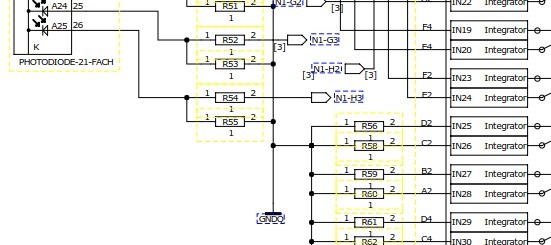Other Parts Discussed in Thread: DDC264
Hello,
I want to use the DDC232 without an FPGA directly connected to a Piccolo controller. In my application I want to connect a photodiode-array to the chip. The output-current FS-range lies between 6uA and 6mA. So I want to use a "current divider" with a 15Ohm resistor to QGND:
Are there any experiences in connecting the DDC232 in such a way?
Are there any C-Software-Samples for the C2000 family or any other controller?
Thank You in advance.
best regards,
Kaspar



